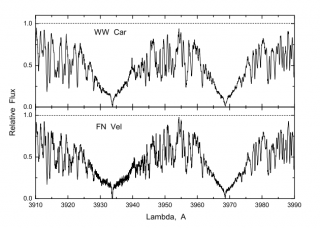 Though the physics behind Cepheid variability is well-understood, we still have significant difficulties to overcome in order to improve the zero-point of Leavitt’s law. Cepheids are supergiants. They are stars several times the mass of our Sun that have evolved off of the main sequence of the stellar color-magnitude diagram (in other words they’re in the stellar ‘afterlife’). Because bigger stars burn their fuel faster than smaller stars, Cepheids are also young stars. Thus they are often found in the dusty regions of galaxies so we have to deal with absorption, reddening, and dust scattering when we observe them. The period-luminosity relationship may also have a dependence on metallicity (the fraction of atoms in the star that are heavier than helium) that we still don’t fully understand.
Though the physics behind Cepheid variability is well-understood, we still have significant difficulties to overcome in order to improve the zero-point of Leavitt’s law. Cepheids are supergiants. They are stars several times the mass of our Sun that have evolved off of the main sequence of the stellar color-magnitude diagram (in other words they’re in the stellar ‘afterlife’). Because bigger stars burn their fuel faster than smaller stars, Cepheids are also young stars. Thus they are often found in the dusty regions of galaxies so we have to deal with absorption, reddening, and dust scattering when we observe them. The period-luminosity relationship may also have a dependence on metallicity (the fraction of atoms in the star that are heavier than helium) that we still don’t fully understand.
Another common problem that we face when using Cepheids—and the focus of today’s paper!—is the presence of a binary companion. In fact, more than 50% of Galactic Cepheids are expected to have at least one companion. The number of Cepheids with binary companions is so high that we can’t deal with them by simply throwing out the ones that have companions. Separating the luminosity of the Cepheid from its companion is important if we want to use the period luminosity relationship.
Read the paper summary on Astrobites

